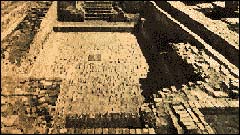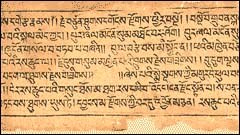The earliest traces of human existence in India, so far discovered, go back to the period between 4,00,000 and 2,00,000 BC. This is suggested by the large number of primitive stone tools found in the Soan Valley and in South India.
Primitive man in the Paleolithic (Stone) Age, which lasted till 8,000 BC, used tools and implements of rough stone. Man was essentially a food gatherer and depended on nature for food.
Mohenjo – Daro
In the North-w estern parts of the Indian subcontinent, there flourished a highly developed civilization. It derived it’s name from the main river of that region, ‘Indus ‘. At it’s peak, it stretched across the whole of Sindh, Baluchistan,
estern parts of the Indian subcontinent, there flourished a highly developed civilization. It derived it’s name from the main river of that region, ‘Indus ‘. At it’s peak, it stretched across the whole of Sindh, Baluchistan,
Punjab, Northern Rajasthan, Kathiawar and Gujarat. The cities were far more advanced than their counterparts in prehistoric Egypt, Mesopotamia or anywhere else in Western Asia.
A vedic Compilation
 The Aryans migrated from the North-west to the area called Sapta-Sindhava (the land of the seven rivers) – Eastern
The Aryans migrated from the North-west to the area called Sapta-Sindhava (the land of the seven rivers) – Eastern
Afghanistan, Punjab and the fringes of western Uttar Pradesh. All that is known of the half millennium following the fall of the Indus Civilization comes from the Vedas, a collection of sacred hymns attributed to the Aryans. They prepared the first and oldest collection of mystical hymns, known as the Rig Veda, which is the only source of information on early Vedic life. The other three Vedas, Sama, Yajur, and Atharva were written much later.
Society described by the three great epics, Ramayan, Mahabarath and the Upanishad was merely part of Indian mythology. Now, it has acquired historical roots. It is upon them that Hinduism is based. Indeed, the Bhagwad Gita, which is a part of the Mahabharat, is wholly concerned with religion and righteous duty and it is to Hindus what the Bible is to Christians. These epics give us a picture of the history of that period.
The epic society was divided into four castes :
1. Brahmins or priests who are responsible for handing down
the Vedas, for setting an example of rightful living.
2. Warriors: whose duty it was to fight and to rule.
3. Merchants: artisans and peasants
4. Out castes, whose duty it was to perform unclean tasks likes cavenging, fishing or handling carrion.
